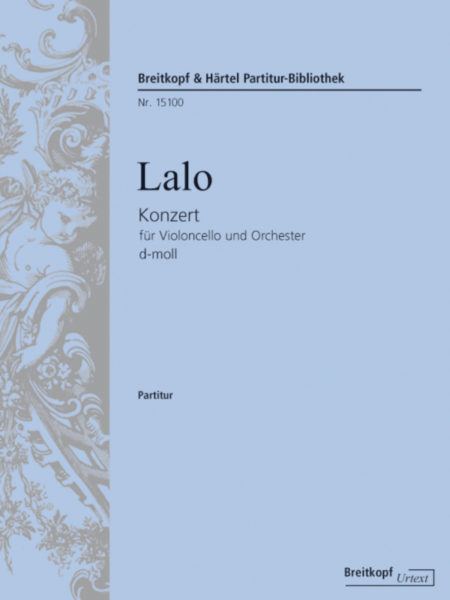Édouard Lalo (1823–1892) Violoncellokonzert d-moll
Urtext herausgegeben von Peter Jost [Vc,Orch] Dauer: 25'
Solo: Vc – 2.2.2.2 – 4.2.3.0 – Pk – Str
Erstmals die Fassung letzter Hand – In Kooperation mit G. Henle Verlag
Nachdem Sie die gewünschten Ausgaben in den Warenkorb gelegt haben, können Sie dort die benötigte Stückzahl bei Bedarf noch anpassen.
Französische Musik hat sich in den letzten Jahren zu einem Schwerpunkt der Breitkopf-Orchesterausgaben entwickelt. Mit dem bekannten Violoncellokonzert von Édouard Lalo betreffen die Neuausgaben auch die inzwischen bewährte Kooperation mit dem G. Henle Verlag. Der durch seine Debussy-, Franck- und Saint-Saens-Editionen ausgewiesene Frankreich-Experte Peter Jost ist Garant für eine einwandfreie Urtext-Ausgabe. Grundlage dafür ist erstmals der autographe Klavierauszug, der Spuren mehrerer Bearbeitungsschichten zeigt, von denen die beiden letzten offenkundig im Erstdruck nicht berücksichtigt wurden. Insofern kann die Neuausgabe mit einer Fülle neuer authentischer Lesarten aufwarten.
„A carefully researched text with clear and spacious printing highlights this sympathetic collaboration of two esteemed publishing houses, Breitkopf & Härtel and Henle.“ (Mary Nemet, Strings)
| 1. Prelude: Lento - Allegro maestoso |
| 2. Intermezzo: Andantino con moto - Allegro - Presto |
| 3. Introduktion: Andante - Allegro Vivace |











